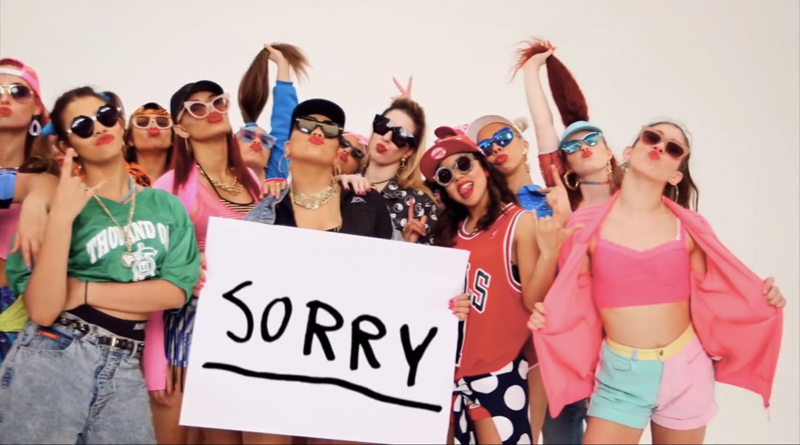Social Media: Follow or Unfollow?
By Summer Aykroyd

As an intrinsic part of our lives, social media influences dance – both creatively and economically. Summer Aykroyd looks into the powerful impact of this tool.
Social media has drastically changed the way dance is consumed and portrayed, how it influences and inspires. It has become a platform to revolutionise dance and has opened up an international stage for New Zealand dancers to share their content with the world.
Success for a commercial dancer has been redefined. It was once limited to being a back-up dancer on a world tour for a singer, or in the background of a music video. Now, a dancer is able to create and capitalise on their own personal brand of dance to reach an audience that could potentially be in the billions. A sell-out live show will still only reach an audience of a few thousand. Social media is giving dancers the same platform that film gave actors and radio gave singers. Dance videos have attracted billions of views; shooting dancers to stardom, such as Jade Chynoweth (2.4 million Instagram followers and a net worth of USD $2 million). The most watched dance video on her YouTube channel has 2.8 million views.
The 9th most viewed video on YouTube, with a massive 3.18 billion views, is New Zealand’s very own Parris Goebel’s dance video to Justin Bieber’s Sorry. Originally a lyric video, it took off and became the main music video for the hit, prompting a best music video award at the American Music Awards and the opportunity for Parris to direct and choreograph all of Justin Bieber’s Purpose: The Movement videos. In an interview with Noted in 2018 Parris said, “dance is the future of music and it is controlling the charts” – and it’s true. Gone are the days where dance videos would be taken down for using music without copyright. “The music world is beginning to see that dance is how you can really make your song peak. Artists are paying choreographers to use their songs”, said Parris. John Shahidi who runs Shots Studio, an Internet talent management company, told The Washington Post that one of his clients (23-year-old Delaney Glazer with 1.4 million Instagram followers) receives 1 or 2 songs a week from music labels asking “what can Delaney do with this?”. The power is now in these dancers’ hands to become their own artist instead of just being hired by one.
The exposure of dance on mainstream media has led to more respect and appreciation of dancers and the strength and artistry that it takes. How many dancers (especially boys that do ballet) were bullied as a child?

Good Morning America’s host, Lara Spencer, recently made a derogatory comment about Prince George enjoying ballet – a comment that not too long ago might have passed unnoticed, but in 2019 caused an outcry from the dance community on social media. The hashtag #boysdancetoo currently has 162,000 posts on Instagram and has inspired male dancers from all over the world to reach out and say that this is not acceptable. The movement was so powerful it prompted an on-air apology from Lara Spencer during a sit-down interview with three high-profile male dancers. A 6:30am ballet class was held in Times Square with more than 300 attendees to protest the accusation that boys shouldn’t dance. Social media has given dancers a platform to create a support network and a place to source inspiration.
However, social media does highlight an issue that has always been prevalent in dance. According to a 2013 article, eating disorders and levels of perfectionism are more persistent among dancers than the general population. And it’s no wonder – dance is a skill that takes continuous hard work and critique to master. Many hours are spent in front of a mirror trying to reach that almost unattainable goal of perfection. It is very easy to compare yourself to others, especially in an audition setting. Social media allows comparison on a much larger scale. Now young dancers aren’t just comparing themselves to their biggest competition in their local classes, but to other dancers all over the world. And some things – extreme flexibility, multiple turns and inhuman jumps are not only unachievable for everyone, but also unsafe and unnecessary for a career in dance. The extreme ends of dance could become the baseline that young dancers compare themselves to. Some critics have spoken out saying that dance will lose its artistry and become two-dimensional to keep up with the online trends.
So, what’s the way forward? I think it’s about finding the balance on how to use this tool safely and effectively for our young dancers. As long as studios keep sending out messages of self-love and accepting your strengths, then social media can continue to allow dance to thrive.
DOWNLOAD THE ARTICLE: Social Media - Follow or Unfollow
References:
https://www.washingtonpost.com/entertainment/theater_dance/these-dance-influencers-are-taking-center-stageonline/2019/10/17/82bc95f0-ef87-11e9-b2da-606ba1ef30e3_story.html
https://www.topplanetinfo.com/jade-chynoweth-lifestyle/
https://www.nzherald.co.nz/entertainment/news/article.cfm?c_id=1501119&objectid=11752302
https://www.digitaltrends.com/web/most-viewed-youtubevideos/
http://www.playbill.com/article/good-morning-ballet-takes-overtimes-square-and-social-media
https://www.tandfonline.com/doi/abs/10.1080/07303084.1990.10604624?journalCode=ujrd20
